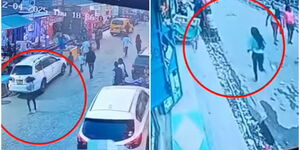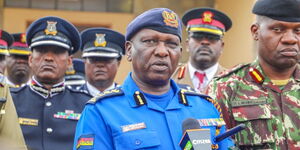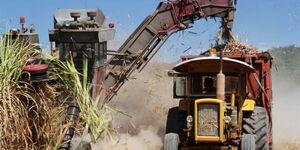Dileep Anthikad, a BirdGuides and a BBC award-winning Indian photographer (2010), quit his job in the oil and gas industry to take up conservation and start a river camp at the Maasai Mara.
Dileep’s passion for caring for wildlife began in Qatar after a pair of black-crowned night herons that he was photographing were shot by hunters. The sight of the dead birds left him heartbroken and informed his next steps.
Together with a conservationist and wildlife photographer Remya Anup Warrier, Dileep began a project that would offer an opportunity for other photographers to capture beautiful scenes of the wild while protecting the animals.
In 2019, the two photographers leased land along River Talek and began the construction of the now Osero Sopia camp.
Speaking to The Week, an Indian Magazine, Dileep stated that most of the work on developing Osero Sopia was done in October 2020 because of challenges caused by the pandemic.
By mid-2019, the river camp was up and running, hosting photographers from different countries around the world.
“The river camp, Osero Sopia, which is located along River Talek, hosts photographers who spend weeks watching animals and taking photographs.
"River Taler is a favoured spot of grazing wild animals and cats to quench their thirst,” Dileep stated
Moreover, the veteran wildlife photographer added that he did not take the Mara for granted because they had stipulated rules at the river camp to ensure the security of the wildlife and ensure they remained ethical.
“For instance, when a photographer encounters a predator going for the kill, it is important that he stays a spectator and not spook predator or prey, despite the obvious excitement.
“We use our knowledge of animal behaviour to help photographers,” explained the photographer.
The photographers also teach others about technicalities to look out for like the location of the sightings, positioning of the vehicles, choosing the right angle and background, and the effect of natural light while taking photographs.
“This is especially important if the photographer wants to do something beyond a portrait. We believe a shot is best when it carries the imprints of the Mara habitat, be it the terrain or its famous sunrise, sunset and fog,” added Dileep.
Additionally, the duo detailed their encounters with wildlife inside their camp, including with elephants, hippos, leopards, and lions.
According to the two, they dug wells for clean water and used solar power in the camp.
“We once encountered a beautiful male bushbuck moving towards our tent. We followed it, but then the buck started running towards us, making alarm calls, indicating the presence of a predator.
"It was then we spotted the lion with a Zebra kill nearby,” Remya narrated.
Remya and Dileep hope to continue learning more about nature and wildlife from the camp as well as hosting more photographers from all over the world.












